We’re working with Mutual Credit Services (MCS), who are developing a library of models / ‘recipes’ for building the commons in all sectors of the economy (from housing, energy and land to water, leisure and broadband), based on Chris Cook‘s energy ledger design and use-credit obligations idea – how we can get investment into commons organisations without going into debt or giving away equity. We’ll:
- make the models accessible for a wide audience, and post on the blog.
- collect questions from commons members and supporters, then interview a specialist from MCS to try to get those questions answered. We’ll record the interview for Youtube and post the video and transcript on the blog.
- host a discussion group with commons specialists and people working in the sector (community energy, housing co-ops, land co-ops, credit unions, water engineers etc.), again to record and post on Youtube and the blog.
- try to get any further questions answered in the comments section, and via an upcoming AI chatbot.
- try to get these ideas implemented via Stroud Commons and elsewhere.
This is a draft outline of a design for an energy commons in any town – an energy sector owned by communities, providing affordable, locally-generated, renewable energy. Next, we’ll interview Dil to flesh out this basic design and pull out more details. Over to Dil:
An energy commons model: energy commons with endogenous finance
Details will vary depending on circumstances, but the core is this:
Select a community on the basis of how they could be aggregated in regard of energy supply: bulk deal, downstream from specific substations, derogation – that kind of thing. Diverse is good.
Gather information. Get the community to let you know/discover:
- their energy bills from last year: units consumed, cost.
- usage profile (can be quite rough: mostly matters if they use electricity/gas for heating, and any heavy use like 3 phase, lots of freezers, car charging).
- building / installation characterisation in efficiency terms (this may need survey finance but can be very rough at the start).
Analyse data for:
- energy efficiency savings.
- renewable installations (and/or modification to existing installations).
Rank the options in terms of speed/cost/effectiveness.
Develop a proposition for/with the community (co-design):
- Detail the roadmap toward energy savings – cost, time, outcomes.
- Develop and agree the financial model.
Set up a mutual organisation of which all will be members. This is a multi-stakeholder org, with member classes:
- Energy Users.
- Operators (energy producers, managers).
- Investors.
- Governance (Elinor Ostrom’s Commons principles).
The purpose of the org is to achieve a win/win/win/win:
- Energy efficiencies and savings for users.
- Decent returns to investors.
- Good livelihoods for operators/workers.
- Reduce CO2 emissions.
These are achieved through cost and efficiency savings made possible through financial collaboration.
1. Income and investment:
- Predictable future income – users sign up to get their energy through the org.
- Up-front income and investment – users and investors pre-purchase kWh vouchers at a discount.
2. Surplus over costs from:
- cost savings through aggregate purchasing power.
- cost and CO2 reduction from energy efficiency improvements using carefully targeted investment.
- cost and CO2 reduction through renewable generation (where possible through direct use).
Raise money through ‘pre-purchase energy credits’ – i.e. cash paid up front for kWh vouchers (users and Investors inside the org, not open market).
There’s a ‘design space’ here, as to how returns are delivered. Generally:
- investor returns paid in kWh vouchers, on the basis of achieving surplus targets. The faster these are achieved, the greater the return.
- users encouraged to buy enough for their usage (in expectation of needing fewer kWh.
- all members get some share of any surplus as energy credits.
Value proposition (on top of meeting eco targets) – getting the same ‘exergy’ (useful results) with reduced energy usage. Achieved through:
- getting the best deal for grid supply as a group buyer.
- implementing efficiency measures, highest cost/benefit first.
- introducing local production.
Members can pay for kWh used with cash or vouchers. Vouchers denominated in kWh hold their value – hedge against inflation. Investors will find a ready market for credits at even small discounts from cash price. Thus a market for further issuance of credits.
Savings from reduced supply costs will come from:
- reduced kWh usage – efficiency.
- reduced kWh cost (group buying power).
- reduced kWh cost – local generation capacity (ideally through entire consumption within the org, avoid wholesale/retail grid price scam).
Use of savings will be agreed by commoners; Some mix of:
- further investment.
- surplus distribution (as kWh vouchers, not cash).
Build confidence on basis of success, so that investors are prepared to hold longer dated vouchers, until..
Diminishing returns arrived at – in other words, all energy use has been made efficient and the bulk of it is generated as locally as appropriate, at which point, begin to issue fewer credits, towards a level of issuance that covers running/maintenance costs only.
Next we’ll be interviewing Dil to put some flesh on the bones of the idea. Let us know if you have questions you’d like us to put to Dil, or comment below. We’ll be posting similar articles / interviews about other sectors of the economy, and we’ll be trying to implement them in Stroud and other towns. Here’s more information.

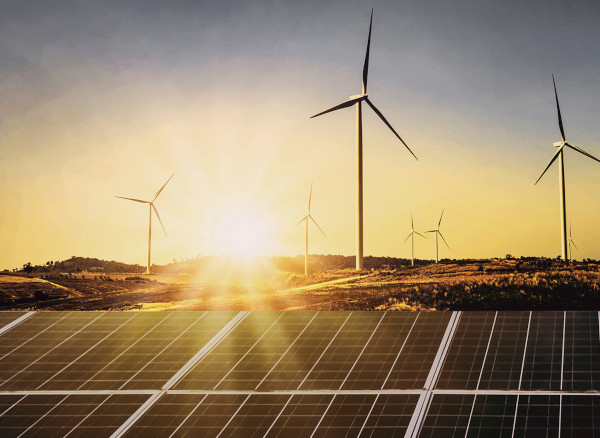
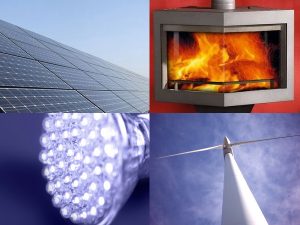
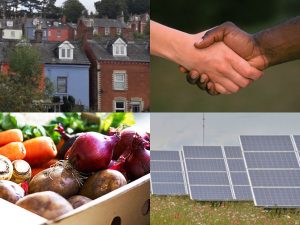


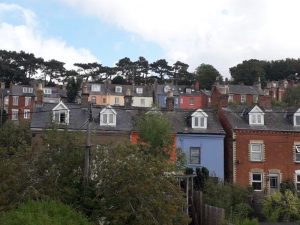
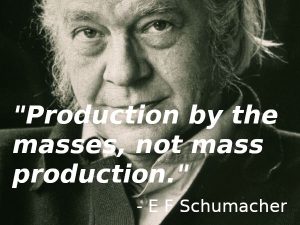
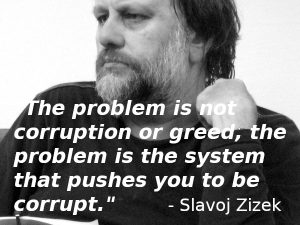
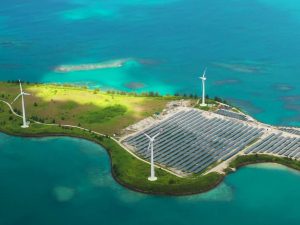
3 Comments
Do you have any information with regard to linking the actual physical energy supply to each investor/consumer? If person A wants to start the local energy commons with 10 solar panels paid for with investment from persons B, C, D etc, how do they receive the electricity generated by A?
Marcia – individuals are members of a commons group, who issue and sell blocks of vouchers to investors, in order to purchase and maintain electricity generation infrastructure. Larger investors won’t exchange blocks of vouchers for kWh, they’ll keep them as savings or part of a pension (they’re denominated in kWh, which tend to rise in £ value). Customers can purchase vouchers at a discount from the energy commons group.
First steps are for people in as many towns as possible to come together with like-minded people to form commons groups (in all sectors, not just energy), which will meet regularly, adopt a constitution, conduct local research, find customers and investors, issue vouchers and employ stewards to manage the scheme and maintain infrastructure. The group in Stroud will be writing toolkits/playbooks to help local groups do all this.
The energy commons group will take care of the supply to individuals.
Dave has outlined the financial mechanism – how they redeem their investment by receiving energy at a discount.
But I think you might have been asking the practical question, too – as to how they actually receive the electrical power?
This is tricky, unless there is a local grid.
In the UK, for instance, solar energy generators must either use the power locally, or sell it to the grid at wholesale prices. B, C and D would then be paying retail price for their energy.
Energy coops deliver a profit share to investors to improve their results, but this is not the Commons approach.
We are looking at ‘energy islands’ – groups of consumers downstream of a substation. There is provision in this instance for their organisation (which could of course be the Commons) to get a special arrangement – a derogation ‘ – and take over the cabling downstream of the substation, sharing a single meter to the grid.
There is also provision for a ‘virtual derogation’, where organisation members are spread around, but constitute a virtual grid.
All of this will hopefully be explored if our bid for Horizon grant funds supports a pilot in Stroud